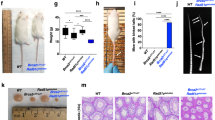Abstract
It has been shown by genetic complementation analysis that a mitomycin C-sensitive mutant (V-H4) of Chinese hamster V79 cells is the first rodent equivalent of Fanconi anemia (FA) group A. The V-H4 mutant shows many typical characteristics of cells derived from FA patients. V-H4 cells exhibit increased sensitivity towards cross-linking agents as MMC (∼30-fold), cis-DDP (∼10-fold), DEB (∼10-fold), and PUVA (∼1.6-fold), but an only slightly increased sensitivity to monofunctional alkylating agents (EMS and MMS) and actinomycin D. V-H4 cells are also moderately sensitive to adriamycin (1.6-fold), and not sensitive to H2O2. The levels of chromosomal aberrations induced by MMC and cis-DDP treatment are higher (4- to 6-fold) in V-H4 cells than in the wild-type V79 cells. Genetic complementation analysis with other Chinese hamster mutants hypersensitive to MMC (irs1, irs1SF, UV20 and UV41) indicates clearly that V-H4 belongs to a different, new complementation group. This unique mutant is very stable and can serve as a vehicle to isolate the complementing FA-A gene from normal human DNA.
Similar content being viewed by others
Literature cited
Fanconi, G. (1976).Semin. Hematol. 4233–240.
Beard, M.E.J. (1976). InCongenital Disorders of Erythropoiesis, Ciba Foundation Symposium, Vol. 37 (Elsevier, Amsterdam), pp. 103–114.
Glanz, A., and Fraser, F.C. (1982).J. Med. Genet. 19412–416.
Schroeder, T.M. (1982).Cytogenet. Cell Genet. 33119–132.
Sasaki, M.S., and Tonomura, A. (1973).Cancer Res. 331829–1836.
Fujiwara, Y., Tatsumi, M., and Sasaki, M.S. (1977).J. Mol. Biol. 113635–649.
Ishida, R., and Buchwald, M. (1982).Cancer Res. 42400–4006.
Poll, E.H.A., Arwert, F., Joenje, H., and Erikson, A.W. (1982).Hum. Genet. 61228–230.
Duckworth-Rysiecki, G., Cornish, K., Clarke, C.A., and Buchwald, M. (1985).Somat. Cell Mol. Genet. 1135–41.
Smith, C.A. (1988). InPsoralen DNA Photobiology, vol. 2 (ed.) Gasparro, F. (CRC Press, Boca Raton, Florida) pp. 47–116.
Hama-Inaba, H., Hieda-Shiomi, N., Shiomi, T., and Sato, K. (1983).Mutat. Res. 108405–416.
Robson, C.N., Harris, A.L., and Hickson, I.D. (1985).Cancer Res. 455304–5309.
Zdzienicka, M.Z., and Simons, J.W.I.M. (1987).Mutat. Res. 178235–244.
Arwert, F., Rooimans, M., Westerveld, A., Simons, J.W.I.M., and Zdzienicka, M.Z. (1990).Cytogenet. Cell Genet. (in press).
Zdzienicka, M.Z., Jaspers, N.G.J., Schans, G.P. van der, Natarajan, A.T., and Simons, J.W.I.M. (1989).Cancer Res. 491481–1485.
Gianni, L., Corden, B.J., and Myers, C. (1983).Rev. Biochem. Toxicol. 51–82.
Weksberg, R., Buchwald, M., Sargent, P., Thompson, M.W., and Simonovitch, L. (1979).J. Cell. Physiol. 101311–324.
Hoy, C.A., Thompson, L.H., Salazar, E.P., and Stewart, S.A. (1985).Somat. Cell. Mol. Genet. 11523–532.
Jones, N.J., Cox, R., and Thacker, J. (1987).Mutat. Res. 183279–286.
Jones, N.J., Stewart, S.A., and Thompson, L.H. (1989).Mutagenesis 515–23.
Fuller, L.F., and Painter, R.B. (1988).Mutat. Res. 193109–121.
Rosselli, F., and Moustacchi, E. (1989).Mutat. Res. 225115–119.
Sasaki, M.S. (1978). InDNA Repair Mechanisms (eds.) Hanawalt, P.C., Friedberg, E.C., and Fox, C.F. (Academic Press, New York), pp. 675–684.
Fornace, A.J., Little, J.B., and Weichselbaum, R.R. (1979).Biochim. Biophys. Acta 56199–109.
Kwee, M.L., Poll, E.H.A., Kamp, J.J.P. van de, Koning, H. de, Eriksson, A.W., and Joenje, H. (1983).Hum. Genet. 64384–387.
German, J. (1972).Prog. Med. Genet. 861–101.
Sakaguchi, K., Zdzienicka, M.Z., Harris, P.V., and Boyd, J.B. (1990).Carcinogenesis (submitted).
Elmore, E., and Swift, M. (1976).J. Cell. Physiol. 87229–239.
Sasaki, M.S. (1975).Nature 257501–503.
Westerveld, A., Hoeijmakers, J.H.J., Duin, M. van, Wit, J. de, Odijk, H., Pastink, A., Wood, R.D., and Bootsma, D. (1984).Nature 31425–429.
Weber, C.A., Salazar, E.P., Stewart, S.A., and Thompson, L.H. (1988).Mol. Cell. Biol. 81137–1146.
Weeda, G., Ham, C.A.R. van, Masurel, R., Westerveld, A., Odijk, H., Wit, J. de, Bootsma, D., Eb, A.J. van der, and Hoeijmakers, J.H.J. (1990).Mol. Cell. Biol. 102570–2581.
Author information
Authors and Affiliations
Rights and permissions
About this article
Cite this article
Zdzienicka, M.Z., Arwert, F., Neuteboom, I. et al. The Chinese hamster V79 cell mutant V-H4 is phenotypically like Fanconi anemia cells. Somat Cell Mol Genet 16, 575–581 (1990). https://doi.org/10.1007/BF01233098
Received:
Revised:
Issue Date:
DOI: https://doi.org/10.1007/BF01233098




